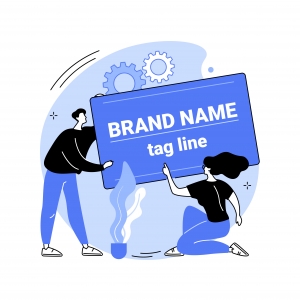Guest Post: 5 Best Ideas for Driving Organic Traffic through Blog Posts
Are you wondering if blogging is actually worth it for your business? Blogs may seem time-consuming to create, especially for a small business owner, but they have shown to be extremely beneficial for driving traffic.
Why are blog posts important for online businesses?
Obviously, this article is all about encouraging more organic traffic through blog posts but what other benefits do blogs bring?
Firstly, the more articles your website has published, the more keywords you are likely to rank for. Increasing keyword ranking will contribute to your website’s SEO rankings and authority within your niche. With a blog, you’re able to address more questions and thoughts that your target audience is looking for and are therefore more likely to rank higher within their search results.
Secondly, blog posts are essential to the educational part of your funnel, the top entry level. People come to blogs for answers to their queries and will start pushing them through your funnel. Helping to create warm leads by getting them to sign up to your email list or explore and purchase your products and/or services.
Thirdly, unlike social media posts that have a short life span, results from blog posts can get better with age. Over time, your articles may attract more links, more shares, and gain higher SERP positions. Blogging will provide long-term results and ensure a continued flow of traffic, leads and potential sales.
This is only a touch on all of the potential benefits you will find from blogging. So, what are the best ways to start?
5 best ways to boost organic traffic with blog posts
1. Writing List Posts
Our first recommendation is to write list posts, exactly like the post you are reading right now. Want to know the specific data behind the success of list posts? In a recent study reported by Conductor, a global SEO agency, 36% of the participants noted that they were more likely to click on list posts and list headlines.
Here are some examples of good list headlines that are sure to increase traffic:
- 10 ways for using the Pomodoro technique in everyday time-management
- 3 open-source alternatives to Adobe Photoshop
- 5 free workout programmes for busy people and their benefits
If you want to increase your search rankings, your list posts have to offer something unique and valuable. This is typically done by following these recommendations:
- Offering expert advice based on your personal experiences. Referring to existing case studies and data.
- Sharing valuable anecdotes and tidbits relevant to your topic.
- Including practical recommendations addressing topical issues.
2. Sharing Third-Party Resources and Links
When blogging, it’s easy to see other bloggers as your rivals. This attitude, however, is destructive and unhealthy if you’re planning to blog professionally.
Collaborating with other bloggers is one of the most effective means of growing organic traffic and is a cornerstone of white-label link building. A great way to achieve this aim is by writing and curating a resource page.
A good resource page should do all of the below.
? Include links to respectable blogs, and third-party products and services.
? Disclose if you’re partnered with other blogs or are sponsored by the companies that you are linking to.
? Be topical; you should update your resource page at least once a month to keep track of the latest issues and provide value to your readers.
? Include your remarks and comments about the content you’re linking to.
Some platforms (e.g., Hubspot) are so large that their entire resources page only includes links to their own resources and tools. This is simply not feasible for smaller bloggers. Because of this, don’t worry if your resources page needs to link to other popular blogs. Other blogs are not out there to ‘steal’ your readers. Your readers will appreciate you trying to provide as much value as possible and will return to your blog for more. In addition, resource pages can be a great place to connect with other bloggers and perhaps gain links back to your blog and grow your rankings.
3. Writing Detailed Reviews
Let’s face it, everybody likes reading a good review. But what exactly should you review? Well, practically anything goes. Book reviews are incredibly popular right now as reading is seen as a highly prestigious and thoughtful hobby in a world that is overwhelmed by information. The average time spent reading books in the US has remained consistently around 15 minutes per day since 2014.
Other great review options are online platforms, tools and courses. Online learning is experiencing a huge boom right now due to the coronavirus pandemic. However, a lot of people simply don’t know what courses or online universities they should choose. You could (and should) become a very valuable guide in a rapidly expanding industry.
Reviews of products are also encouraged. There are always new and emerging products and brands within every niche. Product reviews will always have a place in blogging and gain organic traffic from the people looking specifically for reviews before purchasing anything. This can also easily lead to affiliate sales and sponsored review posts in the future.
If you want to write a captivating review, follow the below guidelines:
- Include links to respectable sources of secondary data.
- Clearly mark your own subjective opinions.
- Don’t be afraid to share personal stories and anecdotes.
- Always remain critical but don’t nitpick.
4. Using a Keyword Ranking Tool
Two of the most widespread mistakes made by bloggers are failing to integrate new keywords into their posts and not getting rid of keywords that are no longer valuable. You’ve already made the same mistakes if you’ve done at least one of the following things:
- Only use a single spreadsheet including all your keywords.
- Do not check the keyword statistics for your older posts.
- Do not use any third-party tools to monitor the rankings of your current keywords.
If you’ve recognised your blogging practices in the above list, then it’s time for a change. Luckily, two of the best keyword ranking tools that are available to bloggers are completely free.
- Ahrefs provides free monthly updates to its keyword database and can search keyword popularity across different domains. The tool also focuses on non-conventional metrics such as keyword difficulty and the estimated organic traffic provided by each new keyword
- MOZ can be used to easily generate infographics about specific keywords and is a great daily tracker of keyword popularity.
Make a habit of spending at least 10-15 minutes per day to check the status of your keywords and update your SEO spreadsheets and documents. This is not only a great time management exercise but is practically a guarantee of achieving solid organic traffic figures.
5. Guest Posting Featuring Opinion Leaders
We’ve already discussed that bloggers become stronger by cooperating and writing extensive resource pages. The same principle also applies to guest posting and inviting opinion leaders to give valuable tips on a specific subject.
A good guest post:
- is written by a well-known personality and includes the distinct features of this personality’s style.
- offers a unique perspective on a topical issue (e.g., new updates to the Google algorithm).
- credits all contributors and details why these people are considered experts in a given field.
- includes links to the guest contributor’s other publications.
We know that guest posting might seem a bit scary. After all, you’re willingly relinquishing creative control to a person you might not have met before. Nonetheless, it’s a great way to grow traffic and increase the authority of your web page.
You can also provide high-quality, guest post content to other websites yourself. This helps to establish you and your business as an authority in your niche and can bring organic traffic from other blogs.
Another way to collaborate with opinion leaders is by creating interview-type posts or list of snippets from multiple personalities. The wealth of information in these posts can attract a lot of attention from potential visitors and links from other bloggers.
Conclusion:
In our opinion, the optimal time to start growing your organic traffic is right now. With the rise in teleworking and similar digital services, more and more people turn to bloggers to adapt to the challenges posed by the COVID-19 pandemic. If you follow the above strategies, you’re sure to become a valid opinion leader in your own right and strongly grow your loyal following.
Catherine Smith is an online Marketing Manager at PhD Centre, specializing in PhD thesis writing. She is passionate about researching and writing on various topics, including Education, Marketing, and Technology.






Follow us online!